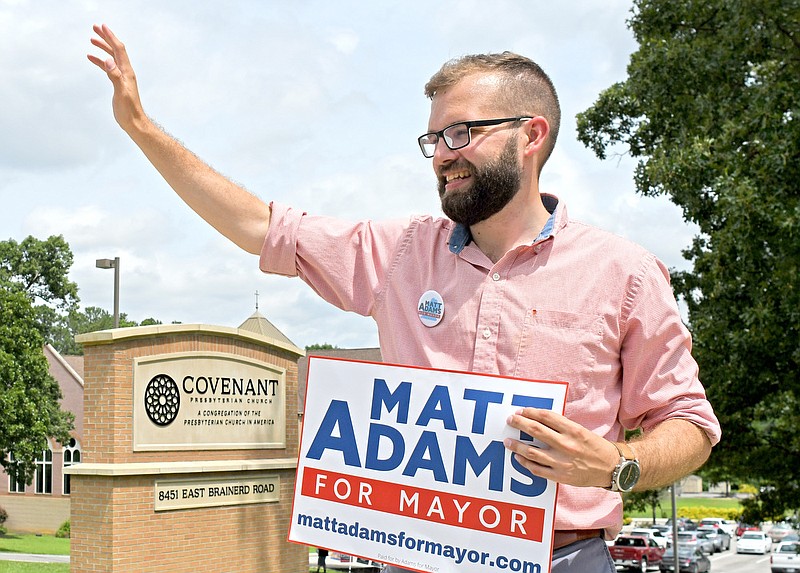An examination of election returns in the 2022 contest for Hamilton County mayor and the initial contest for county mayor under the current system in 1978 indicates how some county voting patterns have switched and some have remained the same based on the direction of national political parties.
Over those 44 years, the national Republican Party has moved from being thought of as the party of the rich and powerful to the party of Middle America, the party of the working family. Meanwhile, the national Democratic Party has moved from being thought of as the party of the average worker to the party of the rich, the powerful and the special interests.
In 1978, Democrat Jimmy Carter was president of the United States, and Democrat Marilyn Lloyd was the U.S. House member from the 3rd Congressional District that included Chattanooga. Tennessee had a Democratic governor, one of its two U.S. senators was a Democrat, and its legislature was heavily Democratic. Locally, Democrats held most of the county's constitutional offices.
However, the county had decided upon a new county executive (now county mayor)/commission form of government and was electing its representatives for the first time.
The mayoral contenders were former county manager Dalton Roberts, a Democrat, former county registrar-at-large Tom Moore, a Republican, and East Ridge city manager Gene Drakeford, an independent. Although the Republican Party had made inroads in the state and even in the county with the election of a Republican sheriff in 1974, Democrats had the upper hand. But in a competitive race with no incumbent, nothing was certain.
After voting on Aug. 3, Roberts was the winner with 51.3% of the vote, though only a plurality was needed to win. No future county mayoral election until 2022 would be as close.
What's interesting, though, is who voted for whom, then and now.
Moore found his most lopsided wins in the wealthy white enclaves of Lookout Mountain, Missionary Ridge, Ridgeside, Riverview and Signal Mountain. He also won precincts in white upper middle class areas of Hixson, Brainerd and East Brainerd. He held his own in working-class Red Bank, winning two of the four precincts and losing a third by one vote.
Roberts, meanwhile, swept all Black precincts in the county, dominated largely white rural precincts in the north, east and southwest parts of the county, and narrowly won all five working-class East Ridge precincts.
He would go on to complete four terms as county mayor, retiring in 1994.
In 2022, Tennessee is considered largely a Republican state. It has a Republican governor, two Republican U.S. senators and a supermajority of Republicans in its state legislature. A Republican is the current county mayor, and all of the county's constitutional offices are held by Republicans.
So, Republican mayoral candidate Weston Wamp - despite emerging the winner of a bruising GOP primary by 318 votes - had a huge advantage in last week's primary, including having a 26-year-old Democratic opponent with little experience, and eventually won the race with 57.26% of the vote.
But comparing where he won his greatest majorities is telling about how patterns have changed.
Lookout Mountain, Missionary Ridge, Ridgeside, Riverview and Signal Mountain are still among the wealthiest precincts in the county, but are more diverse, and Republicans can no longer count on them being in their corner. Lookout Mountain (63.96%) and both Signal Mountain precincts (58.07% and 57.50%) gave the majority of their votes to Wamp, though by much smaller majorities than Moore got, but Missionary Ridge (55.77%), Ridgeside (57.14%) and Riverview (63.48%) gave their majorities to Democrat Matt Adams.
Meanwhile, Red Bank - less working-class now with a younger, more woke population but also many retirees - gave more of its votes to Adams. Wamp won one of the three precincts by 18 votes and tied in the third one.
In formerly Democratic East Ridge, Wamp easily won all three precincts, and he rolled up lopsided wins in the northern, eastern and southwestern parts of the county that were dominated by the Democrat Roberts 44 years ago.
Some things haven't changed, though.
In 1978, Roberts easily won the county's Black precincts, claiming huge majorities over Moore in Alton Park (491-71), Avondale (577-66), Bushtown (339-26), Howard (208-32) and Orchard Knob (412-53). In 2022, despite the switch in wealthy white voters and white working-class voters, Black precincts still voted heavily for Adams.
For instance, the Democrat took 86.75% in Alton Park, 83.25% in Avondale, 85.87% in Bushtown and 86.31% in Dalewood.
When presidential candidates go shopping for contributions in 2024, they'll still hit up the wealthy on both sides of the aisle for support. But when they look for votes, just as mayoral candidates in Hamilton County, Republicans will find less success than they used to with the well-heeled and Democrats less than they once did with the average worker.
